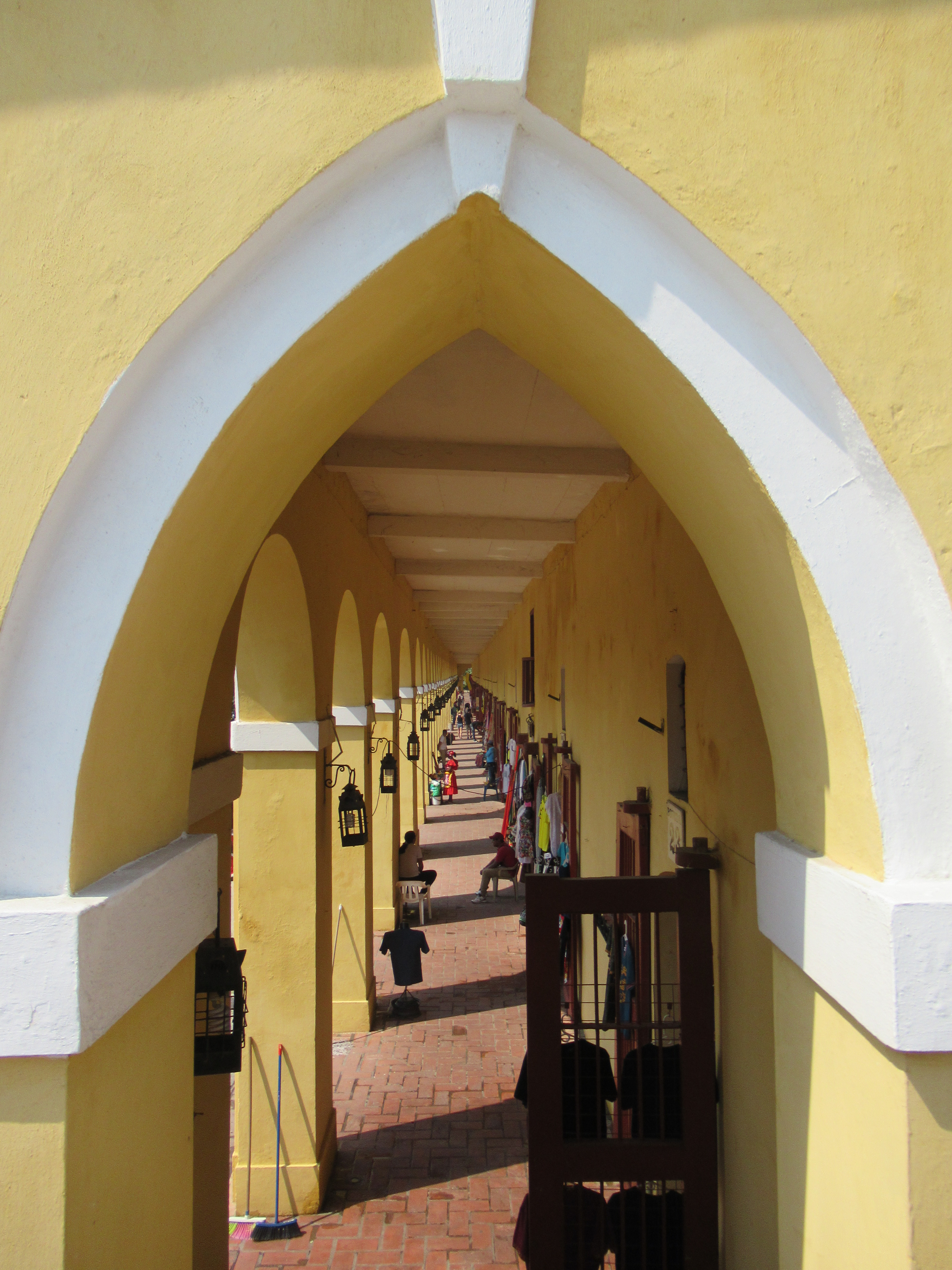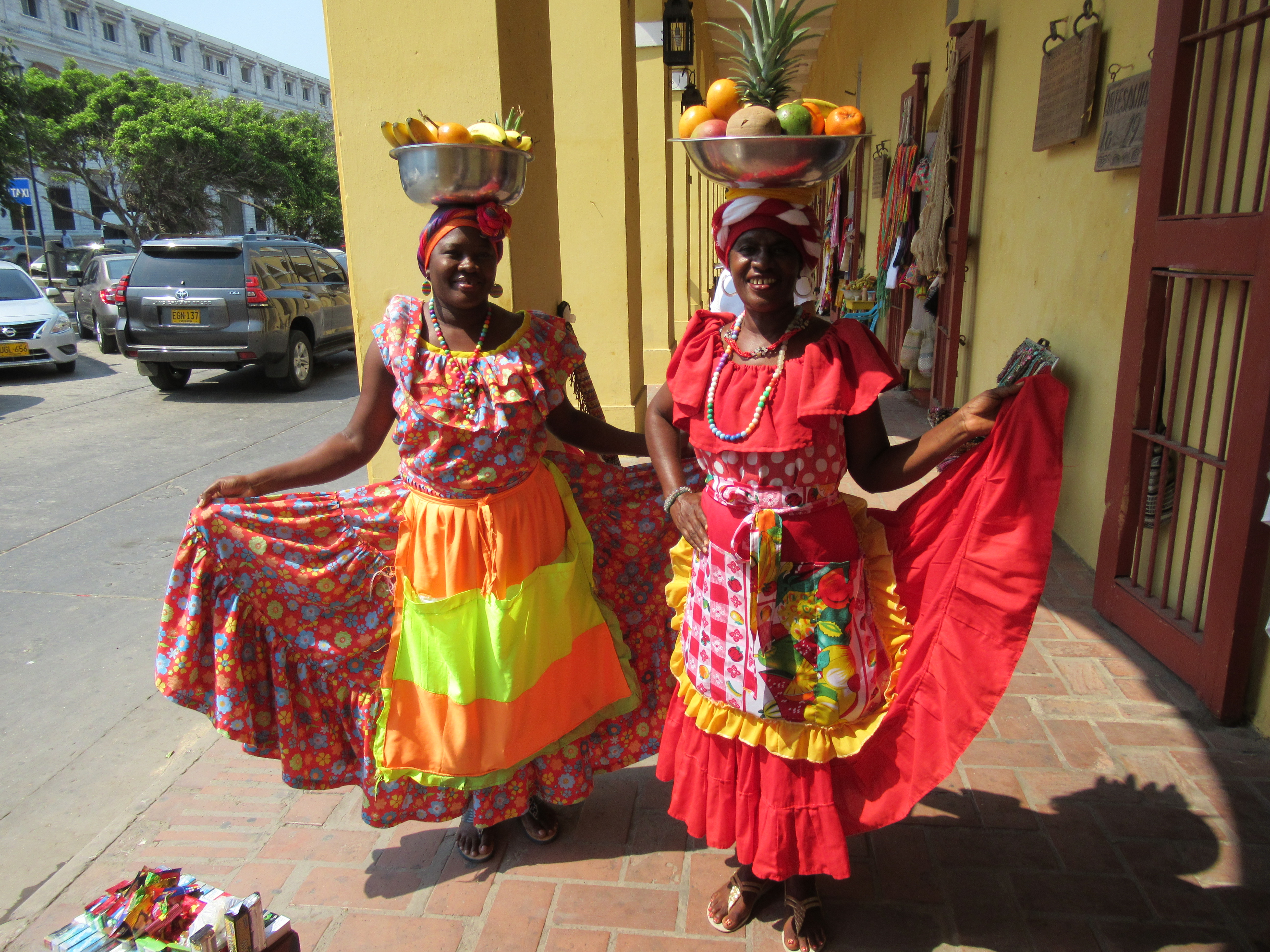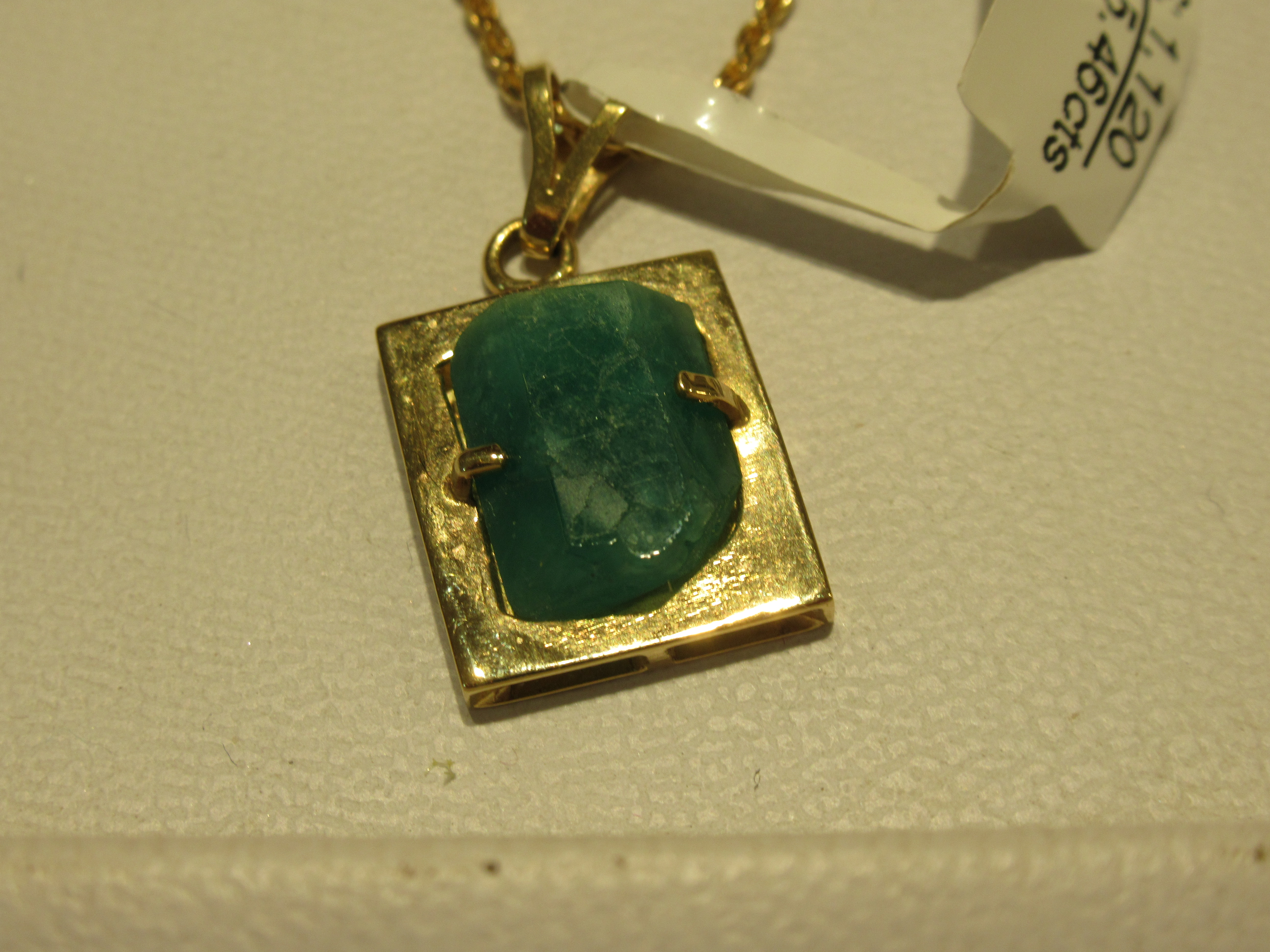Tuesday, 26 February 2019
Cartagena, Colombia
Currently in Cartagena, on the Colombian Caribbean coast cooking quickly in the steamy heat. Can’t begin to tell you how hot and humid it is. Constantly leaking. The last time I felt humidity like this was in Hong Kong.
Not the ideal circumstances to be concentrating constantly to the guide explain the history of the city. Like a walking history lesson at school. There will be a test later he jokes.
Commence proceedings at Castillo de San Felipe fortress. The main fortress built by the Spanish and their African slaves. Guide is indigenous Carib and not descended from African slaves. Has a heavy accent that you would typically attribute to the Caribbean.
Yeah man.
At the foot of the fort stands the statue to Blas de Lezo, a Spanish Admiral who defeated the British Admiral Vernon thus ensuring Colombia speaks Spanish now, rather than English. What’s also remarkable is that Blas de Lezo was one eyed, one armed and one legged.
Apart from that he was alright.
The statue rubs it in a bit to the British. Vernon turned up with 180 odd ships with a naval force of 12,000 men. Having already breached the outer defences, Vernon sent word back to the Admiralty that Cartagena was theirs for the taking.
Commemorative medals were quickly struck before the actual anticipated victory showing the Spanish Admiral Blas de Lezo kneeling before Vernon, with the words, ‘The pride of Spain humbled by Admiral Vernon’, albeit the wording on the statue’s medal is slightly different.
Sadly, Vernon’s task force was defeated by the Spanish garrison of 3,000 men.
Over confident git. (I know you’re laughing at that Miss Edwalton)
To rub salt into the wounds, the Spanish statue has copies of the medal on either side, to remind people of Vernon’s over confidence.
It’s a hot and sweaty TT that walks to the top of the fort for spectacular views over Cartagena. So hot and sweaty that one’s brain is not really able to take in all the history. Along with a heavily accented guide.
He points out the new parts of Cartagena and we can see, “Condoms.”
Condominiums even. Stifle a smirk.
Having been around various forts around the world one already has an appreciation of fort architecture but have to listen again.
In. The. Sweltering. Heat.
As we drive to the other side of the old city, see plenty of young girls trying to sell cigarettes and sweets by the roadside. Told they’re Venezuelans who’ve crossed the border to escape the trouble and strife in that country. Sad to hear that although prostitution is allowed in controlled brothels in Cartagena, girls as young as 15 and 16 who have left Venezuela are now bringing prostitution to the streets, which apparently never happened before. Desperate times.
Have seen many Caribbean ladies wearing flowing and brightly coloured dresses selling fruit from pans atop their heads. It requires a photo but am required to pay a ‘fee’. It’s their money spinner.
Walking through the narrow streets of old Cartagena see the two main types of architecture. Wooden balconies denote Colonial period of the 19th century, whilst stone balustrades and balconies denote the Republican period from the 1920s and 30s. You see. You learn with these blogs. Many balconies dripping with bougainvillea flowers. A competition is held every year to find the most beautifully decorated balcony. The winner pays no council tax for the year. One house has so many plants decorating its balcony it’s won for the past few consecutive years.
Colombia is well known for its emeralds and a small museum tour is a precursor to the emerald shop. My two favourite ladies may be getting an emerald necklace when I return. Generous Uncle that I am. Don’t hold your breath though. They were the cheapest in the shop.
Emeralds are graded by three things: colour, clarity and transparency. Clarity is how many inclusions the stone has or hasn’t. Transparency is how much light reflects inside the stone. See the photos below which show the difference.
All along the streets are a mix of cruise ship tourists following a flag with a guide with a loudspeaker around his neck so we can all hear his commentary and a variety of street sellers selling anything from dodgy Cuban Cohiba cigars (I have a preference for a Cohiba Siglo VI and know how much they really are, not the few dollars they’re being offered on sale for), fresh lime juice with ice of dubious origin, fresh fruit and the usual bottles of water, necklaces and other such tourist tat. It’s a noisy concoction of people.
Wander over to the less touristy part of the old town. Immediately the ambience changes. Much more local with locals living in the properties rather than the part I’ve been in where most of the locals have been priced out by hotels, restaurants and shops. No. Here is much more native. And a better feel for Cartagena of old.
Having spent 5hrs traipsing around in 35C heat and what feels like 100% humidity, I’ve had enough. Food, drink and a goodbye to guide is in order. The problem with having a private guide is that if you get a good one, it’s a great day out and well worth it, like my guide in Medellin. If you get an OK one who is just going through the motions then it’s a bit tedious and intense as you’re obviously obliged to listen but it’s hard work. Everything I say is responded with, “Berry good, berry good. Yeah.” (they pronounce V as a B).
Slowly cool down over lunch in a nice air-conditioned restaurant. But. Another half hour walk back through the furnace of early afternoon to the air-conditioned Hotel Kartaxa (https://hotel-kartaxa-cartagena.hotels-cartagenacolombia.com/en/). As nice as Cartagena is, it’s way too hot in the afternoon to do any more touring.
Becomes a lot cooler after sunset as there’s a strong coastal breeze.
Thankfully.




























